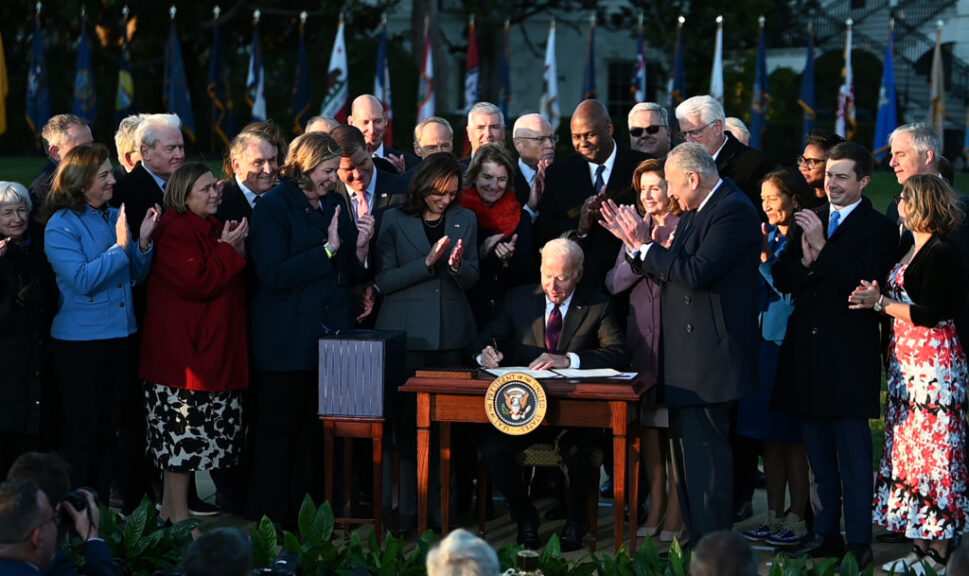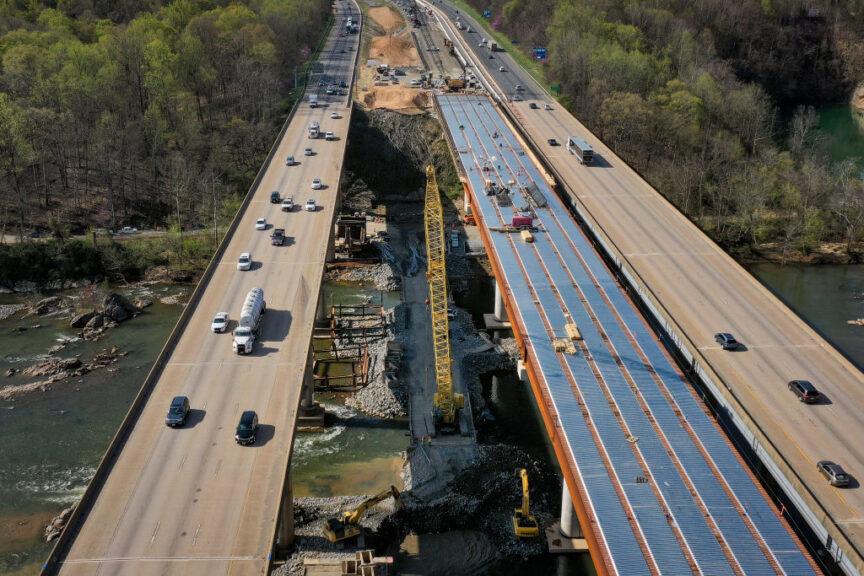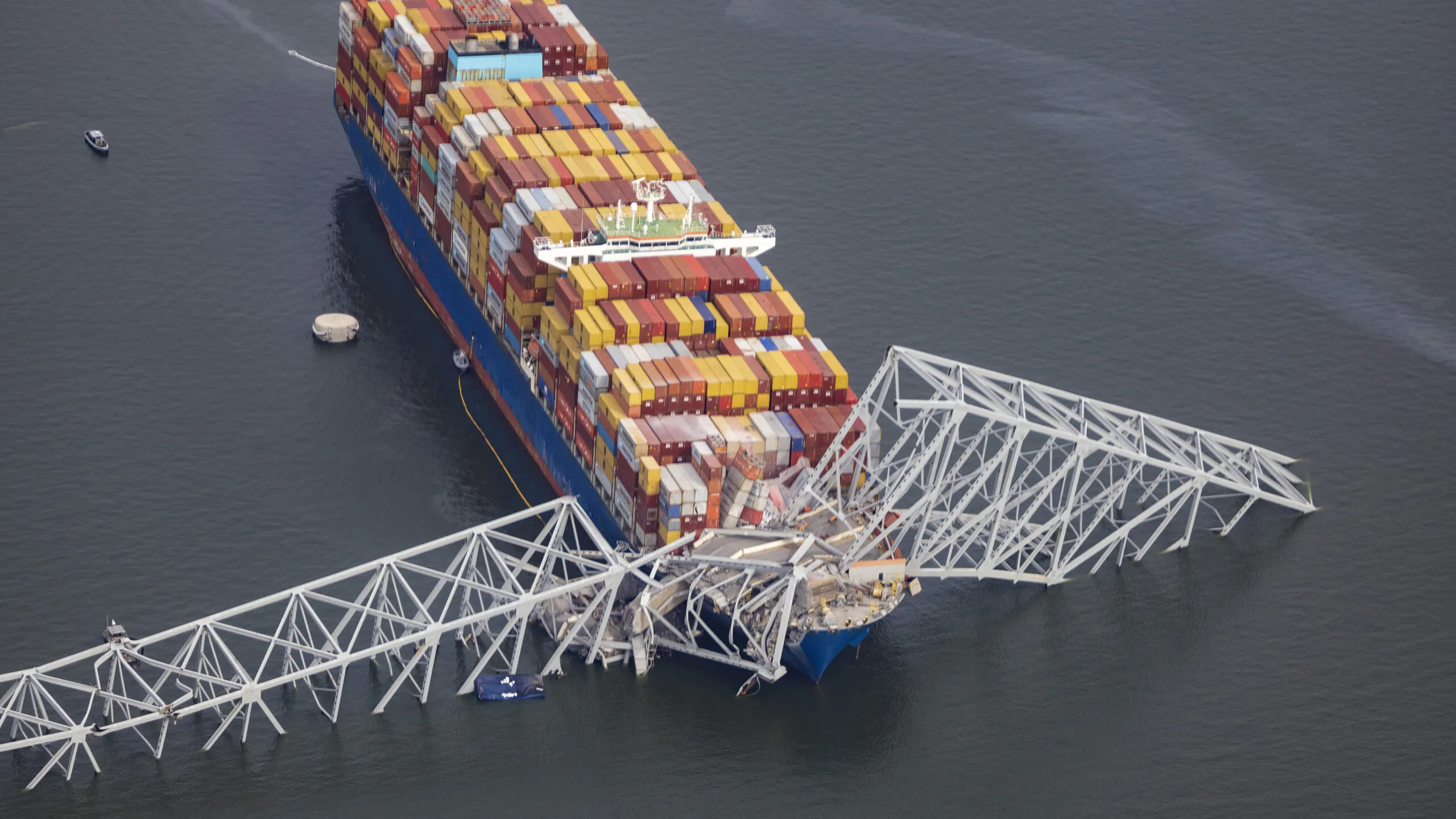Though the exact cause of a container ship’s collision with the Francis Scott Key Bridge in Baltimore, Maryland — which caused the structure’s collapse — is under debate, the disaster that has claimed at least two lives and caused an untold amount of economic damage has drawn attention to the state of America’s infrastructure.
The bridge itself accommodated almost 30,000 vehicles each day, and the Port of Baltimore, which will be heavily disrupted by the collapse and reconstruction, saw 52.3 million tons of foreign cargo and 11.7 million tons of general cargo coming into the port in 2023.
President Joe Biden has already promised that the federal government will foot the bill for the repairs to the bridge.
“It is my intention that the federal government will pay for the entire cost of reconstructing that bridge, and I expect Congress to support my effort,” Biden said. “This is going to take some time, and the people of Baltimore can count on us though to stick with them at every step of the way until the port is reopened and the bridge is rebuilt.”
The bridge was originally built in the 1970s at an estimated cost of $141 million, which is around $743 million in today’s dollars, CNS Maryland reported. Experts have estimated that roughly $15 million a day in economic activity will be disrupted as a result of the disaster, according to Business Insider.
However, it seems like every election year politicians of both parties clamber to pitch grand infrastructure projects that promise to make voters’ commutes smoother and produce all-important “shovel-ready” jobs. Such an infrastructure overhaul was one of the pillars of Biden’s presidential campaign in 2020, and, on paper at least, he delivered.
Two gigantic pieces of legislation passed during Biden’s two years in office, the Infrastructure Investment and Jobs Act (IIJA) in late 2021 and the Inflation Reduction Act in 2022, invested over a trillion dollars into multiple sectors of infrastructure — everything from roads to waterways to broadband — over the next decade, according to Brookings.

Chen Mengtong/China News Service via Getty Images
In truth, only a little over $110 billion in the IIJA will actually go toward repairing roads and bridges, the Washington Post noted. The rest is parceled out among a myriad of other projects, most notably railroads, broadband, and utility infrastructure.
In 2023, the Federal Highway Administration reported that over 42,000 bridges across the U.S. were in “poor” condition, according to WaPo. Between 2020 and 2023, the number of U.S. bridges rated “good” increased in only 11 states, while the number considered to be in “poor” condition increased in 37 states. While 43,000 bridges saw an improved rating in 2023 compared t0 2020, a whopping 70,000 received a lower rating. Almost 13,000 bridges were downgraded from “fair” condition to “poor,” but only 10,000 bridges were improved from a “poor” rating.
American Road and Transportation Builders Association said that a full third of U.S. bridges are in need of significant repairs or replacement, while 7% of bridges are “structurally deficient,” the Council on Foreign Relations reported.
The American Society of Civil Engineers (ASCE) releases a report card every 5 years on the overall health of the nation’s infrastructure, giving it an overall “C-” grade in 2021. The group’s diagnosis of bridges and roads in particular does not paint a rosy picture.
The nation’s roads received a “D” grade from the group, which noted that 40% of public roads are in mediocre or poor condition. Commuters are forced to spend nearly $130 billion a year in repairs and operating coasts because of the prevalence of poor quality roads, and 17% of all vehicle miles were driven on roads deemed to be in “poor condition.”
Bridges received a slightly higher score from the ASCE, a “C,” but the group still expressed a great deal of concern. Over 40% of U.S. bridges are over half a century old, the ASCE stated, and the backlog of repairs in 2021 stood at $125 billion. The report advised a much higher investment level over the next few decades to improve the situation.
“At the current rate of investment, it will take until 2071 to make all of the repairs that are currently necessary, and the additional deterioration over the next 50 years will become overwhelming,” the ASCE report said.
The ASCE estimated in 2021 that the nation’s “infrastructure investment gap” had increased to almost $2.6 trillion over the next 10 years. The organization warned that the deficit could cost the U.S. $10 trillion in GDP, 3 million jobs, and $2.4 trillion in exports by 2039. It noted that the infrastructure investment gap, if allowed to continue, would cost the average American family $3,300 a year in higher costs.

Drew Angerer/Getty Images
Repairing the nation’s bridges represents such a huge stumbling block for the federal government because of its inability to appropriate the necessary funds to tackle traditional infrastructure (large portions of Biden’s infrastructure packages went toward green initiative) and the skyrocketing cost of those necessary repairs.
“I look at South Carolina when the infrastructure bill came through. We only got about $1 billion more than we otherwise would have over a five-year period,” Rep. Nancy Mace (R-S.C.) told Newsmax in the wake of the Baltimore disaster. “I can barely build a bridge in my district for $1 billion.”
Between October 2020 and September 2022, the average cost for highway construction projects increased by 50%, and highway construction costs are almost 3 times higher than they were in 2003, according to the National Highway Construction Cost Index (NHCCI). The index reached an all-time high in the second quarter of 2023.
The Francis Scott Key Bridge collapse isn’t the first major infrastructure disaster of Biden’s tenure. In 2023, a Norfolk Southern train derailed in East Palestine, Ohio, resulting in a controlled burn of toxic chemicals that were released into the air and affected local residents.
Biden was slammed for waiting a year before he visited East Palestine and was met with disappointed East Palestine residents when he made the trip to the small town last month. The total cost of the derailment is estimated at $1.1 billion.
Despite two major infrastructure initiatives within the last 4 years, the long-term health of America’s roads and bridges does not look hopeful. Without a major decrease in the cost of repairs and an increase in infrastructure investments, the deterioration will continue, perhaps even accelerate. A poor network of roads and bridges will not only directly pass costs on to normal Americans, but also affect the nation’s economy as a whole, accentuating our financial woes. And perhaps most importantly, it will almost certainly increase the rate at which we see deadly disasters like the one in Baltimore.

Continue reading this exclusive article and join the conversation, plus watch free videos on DW+
Already a member?

.png)
.png)

